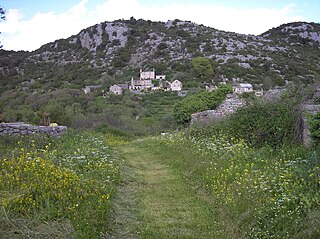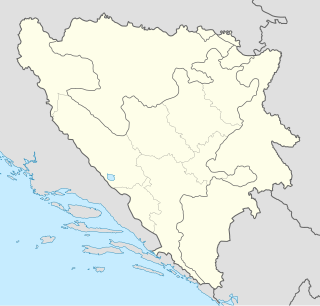| Bezujno | |
|---|---|
| Village | |
| Coordinates: 43°34′30″N19°00′09″E / 43.57500°N 19.00250°E | |
| Country | |
| Entity | |
| Municipality | Čajniče |
| Population (1991) | |
| • Total | 138 |
| Time zone | CET (UTC+1) |
| • Summer (DST) | CEST (UTC+2) |
Bezujno (Serbian Cyrillic : Безујно) is a village in the municipality of Čajniče, in the Republika Srpska entity of Bosnia and Herzegovina. It is located near the border with Montenegro.
The Serbian Cyrillic alphabet is an adaptation of the Cyrillic script for the Serbian language, developed in 1818 by Serbian linguist Vuk Karadžić. It is one of the two alphabets used to write standard modern Serbian, Bosnian and Montenegrin, the other being Latin.

A village is a clustered human settlement or community, larger than a hamlet but smaller than a town, with a population ranging from a few hundred to a few thousand. Though villages are often located in rural areas, the term urban village is also applied to certain urban neighborhoods. Villages are normally permanent, with fixed dwellings; however, transient villages can occur. Further, the dwellings of a village are fairly close to one another, not scattered broadly over the landscape, as a dispersed settlement.
In Bosnia and Herzegovina the smallest administrative unit is the municipality. Prior to the 1992–95 Bosnian War there were 109 municipalities in what was then Socialist Republic of Bosnia and Herzegovina. Ten of these formed the area of the capital Sarajevo.




